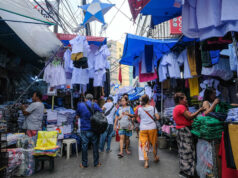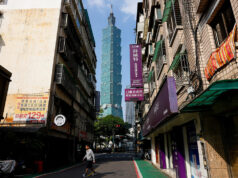With over 30,000 stores globally, Starbucks is now the world’s largest “coffee” store chain. And while it is present in over 70 countries, in reality, however, only four big markets account for more than half of those stores: the United States, China, Japan, and Canada. In the Philippines, it reportedly has around 250 stores nationwide.

Starbucks is an old company. It started in Seattle, Washington in 1971 — almost 50 years ago. I’ve been to the original store near Pike Market, and from the way it looked, I figured the owners never really imagined the business getting as big as it is now. But it didn’t start growing big until after it was sold in 1987. By 2017, the chain reportedly had $22 billion in gross revenues; over $2 billion in net income; over $14 billion in assets; and, over 277,000 employees worldwide.
Starbucks opened its first store outside North America in Tokyo in 1996. This was unsurprising, of course, as Japan is a big consumer of coffee. And it was equally unsurprising that the first store had to be in the expensive Ginza neighborhood. A year after, in 1997, a store was opened in the Philippines, at 6750 Ayala Avenue, at the financial district of Makati City. More international stores later opened in London in 1998, and then in Sydney in 2000.
The Starbucks chain has been operating locally for over 21 years now, and has become a common fixture in many highly urbanized Philippine cities. For those born in the late 1990s and onwards, perhaps they can no longer imagine a world without Starbucks. The company enjoyed prime mover advantage here, being the first to promote the “new” coffee “culture.”
I bought into the Starbucks lifestyle early on. Being a young newspaper editor in 1997, Starbucks 6750 was a convenient, comfortable, and classy venue to do interviews or chat with news sources while in the financial district. It was also a nice place to have coffee and converse with friends or colleagues, either for professional or personal reasons.
When I stepped down as managing editor in 2005 and went into business for myself, Starbucks became my go-to place. One can get a cup of coffee, camp out with a laptop, and get work done — the whole day, if need be. As a freelancer, or small business owner — a.k.a people without offices — I found it convenient, comfortable, and practical to work in Starbucks and other cafés. Meetings were held there, and work got done in between. Coffee meetings were also cheaper than lunches.
And for people who travel frequently, Starbucks is always considered “home,” wherever they are in the world. Looking for coffee, or breakfast, or a place to hang and rest for a while, there is always a Starbucks store within reach. And, it looks and smells and feels the same wherever in the world you are. As long as it is properly maintained, of course.
But just as McDonald’s or KFC are quick-fix, go-to places for relatively inexpensive meals whether in the Philippines, the US, Japan, Hong Kong, or other parts of the world, identifying with these “brands”, however, is a generation thing. Perhaps they are more for kids and adults no older than 65 years as of today. For older folks, Starbucks is either too expensive or too noisy.
But the personal relationship with brands perhaps will not be as strong as with Starbucks when it comes to the search for “home.” Given a choice, one can be more inclined to “hang” in a Starbucks store than in McDonald’s, for instance. I, for one, will go to McDonald’s of KFC for food but will rather have coffee in Starbucks while waiting for someone or to get some writing done.
And this, to me, is where Starbucks gets it right. The others are all “fast” food, and want you to quickly eat your meal and send you on your way. Starbucks, in a way, is also “fast” coffee. Many go in-out and get coffee “to-go.” But the venue also invites you to take things “slow,” to ease into a comfortable seat, and slowly sip your coffee, while listening to soothing music.
Or, if you are the more practical type, to pick a spot, open your laptop, plug in your charger, and put on your earphones to listen to your own music. After buying something to eat or drink, of course. And while many will argue that Starbucks coffee is either inferior in taste or flavor, or expensive compared to others, what they don’t get is that people keep going back for more than just the coffee. The “experience” offered is what actually sells the place, in my opinion.
But the culture that Starbucks has cultivated in the Philippines since 1997 is not without its consequences. For one, it has paved the way for access to coffee or caffeine by teens when this was probably not as widespread around 20 years ago. In the past, coffee had always been for the older folks, while kids and teens consumed juices and sodas. But now a younger generation of coffee drinkers have evolved, more so with the popularity of cold brews.
And while Starbucks provided more comfortable venues for people to meet and converse face-to-face, to an extent, coupled with technology, it has also brought out the worst in some people. And this is the main reason that I don’t frequent the place like I used to. Many go to coffee shops to work or do business, which is fine. But there are some individuals who occupy tables good for three or four people and treat these as exclusive domains for hours on end.
And this sense of entitlement comes from the mistaken notion that buying one cup of coffee already gives them free, unrestrained, and unimpeded access to all services — occupying a table for three because they need to “work” or have a meeting; charging laptops and mobile phones for free; using two to three seats for bags and other stuff; unlimited time in toilets; internet access; etc. — to the inconvenience of other customers.
I once encountered a middle-aged man playing an online video game on his mobile phone while in a coffee shop. He was wearing earphones and was obviously conversing with other online players. He was loud and disruptive, and his mouth needed a good cleansing. But he was oblivious to the fact that he was irritating or annoying other customers. And, the store staff didn’t bother to tell him, perhaps avoiding the risk of offending a customer.
Simply put, some coffee stores have become too comfortable, so much so that customers take the liberty of doing as they please — forgetting that they are still, actually, in public and not in the comfort of their own private homes or offices. Worse, some inconsiderate individuals hold court in coffee shops, conducting business as if they own the place, with loud conversations to boot. Worse, they make a mess of the place without bothering to clean up as they leave.
This is not to say that Starbucks or coffee chains are to blame. After all, they are simply the venue, and not their customers themselves. And it will be difficult for stores to “screen” customers or to insist on exclusivity, for to do so is simply bad for business. My issue is not with lack of class but simply with lack of manners. One cannot help but be disappointed by the sense of entitlement some people get from buying a cup of coffee.
Marvin Tort is a former managing editor of BusinessWorld, and a former chairman of the Philippines Press Council.



